KORG ARPODYSSEY-FS K3 Kit
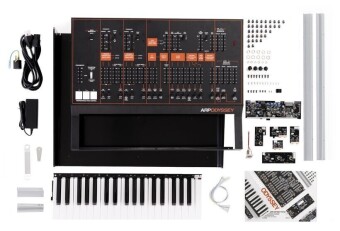
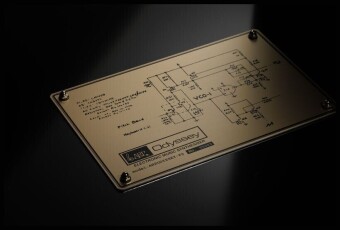
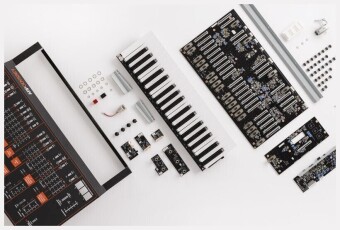

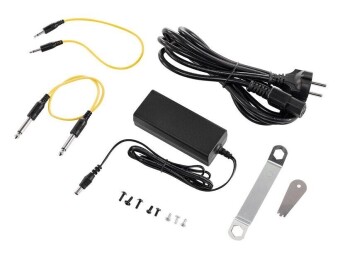
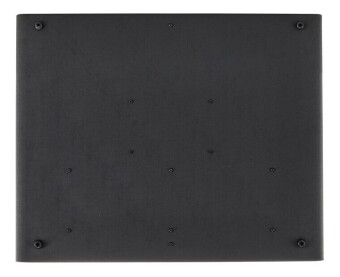





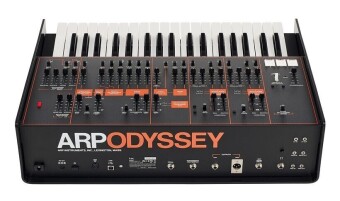
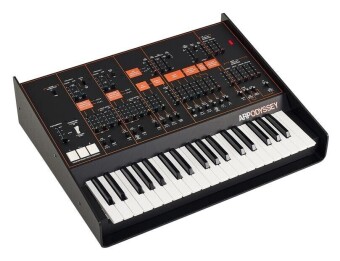

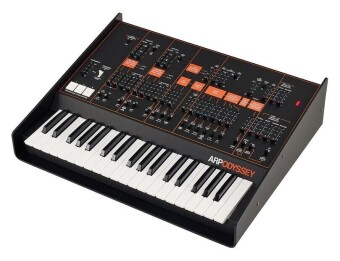
 120 120 р. предложить свою цену
52995
120 120 р. предложить свою цену
52995
The year is 1972, and musical interest in synthesizers is hitting a fever pitch, driving innovations that would bring the iconic sounds of traditionally-massive setups to studio-compatible designs. With the success of the 2600 already well established, ARP would debut the first incarnation of its groundbreaking synthesizer: the Odyssey. For nearly a decade, they would continue to ideate on the aural offering of this duophonic synth, releasing eight iterations across three generations of the Odyssey, the last two of which — the Mk III — are the bedrock of the Odyssey FS Kit’s construction. Literally. Featuring the full-size 37-note keyboard, the Odyssey FS Kit utilizes the original analog circuitry of the Mk III, supplementing it with a few modern design considerations while preserving the ineffable sounds of its predecessors that would define a generation.
Legendary synthesis, 50 years in the making
If you’re concerned that the Odyssey FS Kit is anything less than a proper Odyssey synthesizer, rest assured that the only thing differentiating this from a classic model is who’s building it: you. Each Odyssey FS arms you with the same analog circuitry that elicited the distinct sonics of the original, faithfully reconstructed from the circuit level up. From its duophonic, bi-oscillator architecture to its pulse-width modulation, envelope generators, and many more sonic sculpting tools, this is a bona fide ARP Odyssey FS. You can even ask David Friend, co-founder of ARP, alongside the late Alan Robert Pearlman, lead adviser on developing the Odyssey FS Kit.
Same dog, new tricks
While the Odyssey FS Kit is primarily based on the original Mk III — sold from 1978 to 1981 — it comes with a few welcome additions that don’t compromise sonic integrity. The lowpass filter is the primary difference in the three generations of Odyssey synths. Though each generation is sought after for different reasons, the lowpass filter significantly contributed to distinguishing the Odyssey’s precise, ferocious sounds that led to it finding a home with the likes of Herbie Hancock, Trent Reznor, ABBA, Jean-Michel Jarre, Stevie Wonder, and many more. With the Odyssey FS Kit, the same meticulous engineering that went into developing the analog circuitry was applied to a unique 3-part switch, giving you access to all three iterations of the Odyssey’s LPF. Type I delivers the aggressive, sharp sounds of the Mk I’s 12dB/Oct circuit; type II serves up the sonorous lows of the Mk II’s 24dB/Oct filter; and type III hits the Mk III’s flexibility that maintains its tremendous stability, no matter how high you crank the resonance. Additional modern accommodations include USB-B connectivity, a 5-pin MIDI input, and a dedicated headphone output. There’s also the new Drive switch, perfect for taking your sounds into sixth gear whenever you need it.
Vintage voltage done right
Like the original duophonic game-changer, the Odyssey FS Kit features two VCOs with sawtooth, square, and dynamic pluse waveform options. Pulse-width modulation and FM provide even greater degrees of control, coupled with per-oscillator LFO and S&H toggling, as well as ADSR and AR envelope generators. The Proportional Pitch Control system returns, allowing you to dial in portamento and transposition across a 4-octave range. Texturizing tools include the variable white- or pink-noise generator, a flexible VCF and VCA, a ring modulator, and dedicated input jacks for a pedal and a portamento footswitch. Including 3.5-millimeter monaural phone jacks provides Gate, Trigger, and CV I/O choices, making for streamlined integration into virtually any arrangement.
DIY for everyone
Despite the legacy of the ARP Odyssey, you don’t need any specialized technical knowledge or an electrical engineering degree to assemble your synth. To commemorate this one-of-a-kind instrument and the experience of building it yourself, each Odyssey FS Kit comes with a metal plaque engraved with a serial number unique to each unit. Plus, the solder-less construction makes assembly a breeze. Finally, the included pictorial guide and necessary tools provide accessible, step-by-step instructions to ensure your Odyssey delivers the distinctive analog warmth of its legendary predecessor.
ARP Odyssey FS Kit Features:
- DIY kit overseen by ARP co-founder David Friend, ensuring historical accuracy for constructing a proper, classic Odyssey
- Pictorial guide and necessary tools for assembly are included, with no need for soldering, ensuring anyone can assemble their instrument
- Meticulously developed analog circuitry guarantees the sonic accuracy and fidelity of the original Mk III Odyssey
- 3-part selector lets you choose which generation of the Odyssey’s characteristic LPF you want to use
- New Drive toggle augments your sound with the boost you need only when you need it
- FS design means a proper 37-note keyboard with full-size keys
- 2-VCO architecture guarantees flexibility between monophonic and duophonic play, with 3 waveforms available for each oscillator
- White- and pink-noise generator offers versatile texturizing tools
- Oscillator sync, sample & hold, and pulse-width modulation accommodate precise sonic sculpting that defined the original Odyssey sounds
- Proportional Pitch Control system means ±2 octaves of transposition with portamento
- 2 dedicated 1/4-inch inputs let you connect a standard pedal and portamento footswitch simultaneously
- USB-B port and 5-pin MIDI input expand playback and integration options without sacrificing historic sounds
- Onboard VCF, VCA, and ring modulator, as well as ADSR and AR envelope generators, create unmatched opportunities for sonic shaping
- Audio output options include 1/4-inch monaural phone jack and XLR connector
- Dedicated 1/4-inch headphone output lets you play virtually anywhere
- 3.5mm CV/Gate/Trigger I/O further expands production and performance opportunities
- Commemorative metal plaques are engraved with unique serial numbers to celebrate the experience
